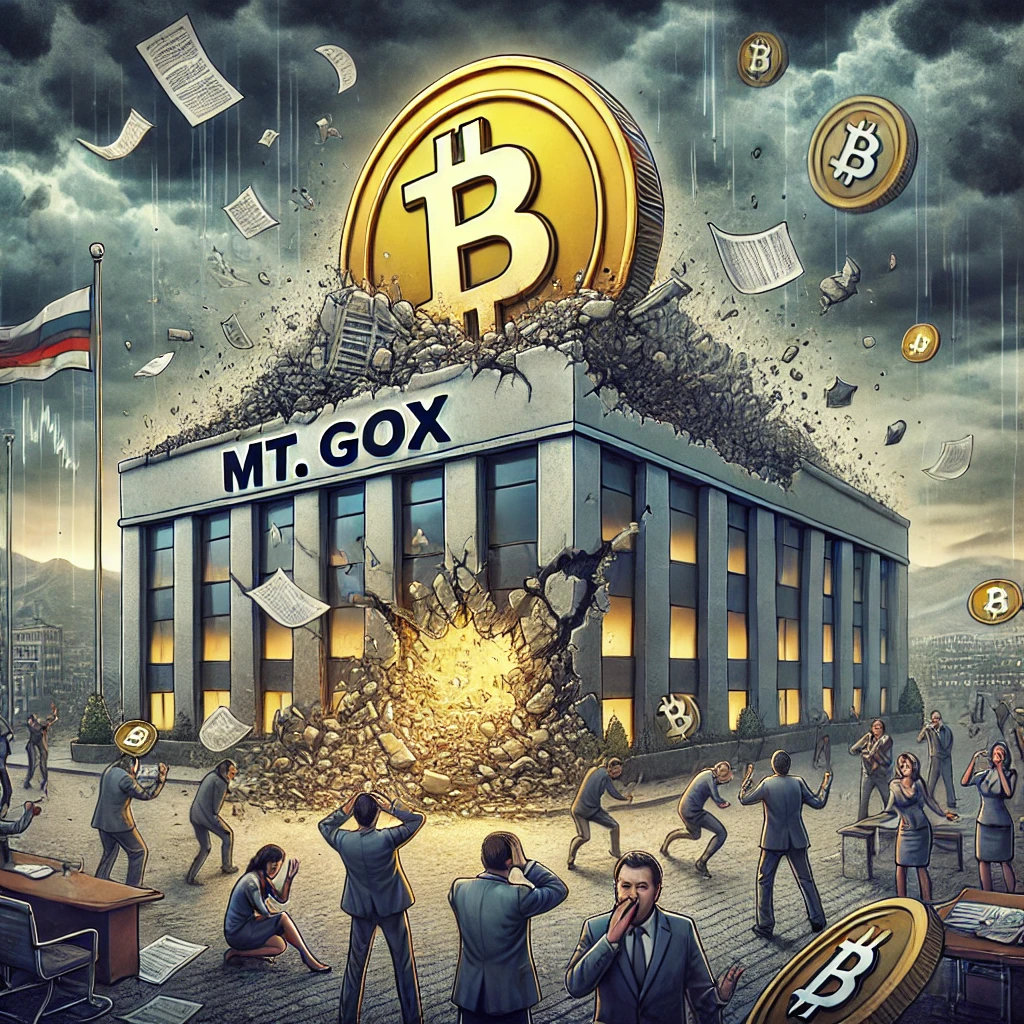Main Points:
- Mount Gox extends repayment deadline from October 2024 to October 2025.
- Investors expect a reduction in short-term selling pressure on Bitcoin (BTC) due to the extension.
- 68% of the total Bitcoin under Mount Gox’s custody has been repaid.
- Many creditors have yet to complete the necessary procedures for repayment.
- This decision could have a significant impact on Bitcoin market dynamics in the coming year.
Repayment Deadline Extended by One Year
In a major development for the cryptocurrency world, the defunct exchange Mount Gox, which collapsed in 2014 following a massive hack, has announced an extension to its repayment deadline. Originally set for October 31, 2024, the deadline has now been pushed back by one year to October 31, 2025. This extension follows approval from the courts, as announced on October 10, 2024.
The postponement is seen as a relief by many investors, as it eases immediate concerns over the potential selling pressure that could have occurred with the release of a large amount of Bitcoin (BTC) and Bitcoin Cash (BCH). Had the repayment begun as originally planned, significant sell-offs may have triggered volatility in the already fragile cryptocurrency market.
Reasons for Extension
The primary reason for this extension is the incomplete status of the repayment procedures for many creditors. Despite efforts by Mount Gox to resolve outstanding issues, numerous creditors have not yet submitted the necessary documentation or completed the required steps to receive their repayment. According to the latest reports, while a significant portion of the payments has already been processed for those who fulfilled the necessary conditions, there remain a substantial number of creditors who are still ineligible to receive their compensation.
Mount Gox explained in an official statement that, “While the repayment procedures have been completed for many creditors, some still face issues in the repayment process. Therefore, the trustee, with court approval, has extended the deadline to allow for more time to resolve these outstanding issues.”
Repayment Progress So Far
Mount Gox, which was once the world’s largest Bitcoin exchange, began the repayment process in July 2024. The repayment marked a significant moment, as creditors had been waiting nearly a decade to recover their funds following the infamous hack in which over 850,000 BTC were stolen. The exchange’s trustee had previously reported that approximately 142,000 BTC remained under their management for distribution.
As of August 21, 2024, Mount Gox successfully completed repayments to over 19,000 creditors. However, the process has been complex, with issues arising regarding the accuracy of account information and the verification of registered accounts. Creditors were required to correct any discrepancies before receiving their funds. Despite these hurdles, the trustee has confirmed that around 68% of the total Bitcoin earmarked for repayment has now been distributed.
Market Implications of the Deadline Extension
The extension of the repayment deadline could have far-reaching implications for the cryptocurrency market. One of the biggest concerns surrounding the repayment process was the potential for a sudden influx of Bitcoin into the market, which could have exerted significant downward pressure on the price of BTC. The original repayment schedule was seen as a potential trigger for large sell-offs, as many creditors might choose to liquidate their holdings once the funds became available.
With the deadline now pushed back to 2025, this risk has been delayed, giving the market more time to absorb the eventual supply of Bitcoin. While this has brought some relief to investors in the short term, the long-term impact remains uncertain.
Several analysts believe that by spreading the repayments over a longer period, the market can better accommodate the increased supply, potentially avoiding the sharp drops in price that some had feared.
Bitcoin Holdings Under Mount Gox
According to blockchain analysis firm Arkham, Mount Gox currently holds 44,905 BTC in its remaining wallets. This represents about 32% of the total Bitcoin that the exchange held at the time of its collapse. The remaining Bitcoin, which has already been distributed to creditors, accounted for the bulk of the initial repayment process.
It is also worth noting that Mount Gox still has a substantial amount of Bitcoin Cash (BCH) to distribute. The decision to distribute both BTC and BCH to creditors was made early in the proceedings, and it remains to be seen how the market will react once the remaining assets are fully distributed.

Potential Future Developments
Looking ahead, the extension of the repayment deadline raises questions about the future dynamics of the cryptocurrency market. The decision to delay payments suggests that both the courts and Mount Gox’s trustee are prioritizing the orderly resolution of the repayment process. However, the sheer scale of the repayments — and the fact that many creditors have been waiting nearly a decade for their funds — means that market reactions are likely once the new deadline approaches.
Additionally, the extension gives the cryptocurrency market more time to stabilize in the wake of broader economic conditions, such as inflation concerns, regulatory shifts, and geopolitical events that have impacted digital assets throughout 2024. With the global market still adjusting to macroeconomic trends, the delayed repayment might also offer a buffer against these uncertainties.
Long-Term Implications for the Market
In conclusion, the extension of Mount Gox’s repayment deadline to October 2025 offers a temporary reprieve from the immediate concerns over Bitcoin selling pressure. With 68% of the Bitcoin already repaid, the focus now shifts to ensuring that the remaining creditors complete their necessary procedures. While the extension delays any immediate market disruptions, the eventual release of the remaining Bitcoin could still have a significant impact, depending on broader market conditions at the time.
Investors should remain vigilant, particularly as the new deadline approaches. The potential for volatility is still present, but the extended timeline may provide the cryptocurrency market with the stability it needs to absorb these changes over the next year.


